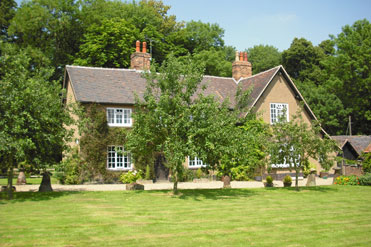George Eliot
Mary Ann Evans, better known as George Eliot, was born in 1819 at South Farm on the Arbury Estate, where her father was for many years the agent. Several of her novels have as their setting, the Warwickshire countryside that she had known in her youth, in particular the Scenes of Clerical Life, which were first published in 1857.
Cheveral Manor, which figures so prominently in this series of novels, is Arbury, and Sir Christopher Cheverel, its benevolent and cultivated owner, is Sir Roger Newdigate. In Mr Gilfil’s Love-Story George Eliot describes how Cheverel Manor was growing from ugliness into beauty at the hands of Sir Christopher and this story is derived entirely from Sir Roger Newdigate’s transformation of Arbury from an Elizabethan house into a Gothick one in the second half of the eighteenth century, an operation which was still sufficiently alive in the minds of those who witnessed it to influence a young woman who was not born until thirteen years after Sir Roger himself had died.
Ugliness into beauty? George Eliot was writing in the middle of Queen Victoria’s reign, when the protracted struggle between the Classical and the Gothick schools of architecture “the Battle of the Styles” was as good as won by the Gothick supporters. But the Victorian era is now sufficiently distant for its products to arouse interest and even admiration, and Arbury, as an outstanding example of the Gothick Revival style from which so much Victorian architecture stemmed, is a document of particular importance.
For further information please visit www.georgeeliot.org


